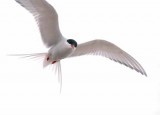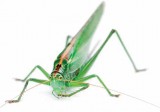Find out what goes on in Terry Rodgers' classroom, Teaching Award winner 2009...
 TP: What’s your favourite science lesson?
TP: What’s your favourite science lesson?
TR: Last year we were involved in a huge STEM (Science Technology Engineering and Maths) project. We decided to take on the theme of flight and developed a whole school programme around this with support from the aircraft manufacturers Bombardier. It involved a huge range of activities, including the chance for pupils to take a chartered flight themselves.
TP: Is there a particular session from the project that you enjoyed?
TR: We taught a lesson on animals that fly. As an introduction, we asked children to investigate the forces of flight and put together practical presentations. For example, we had great fun using a hair dryer to levitate a ping pong ball, demonstrating the Bernoulli effect. After this, children moved on to a circuit of four activities. We set up a timer on the whiteboard and pupils switched tasks every 15 minutes.
 Group 1
Group 1
During the introduction to the lesson, children were shown what a good observational drawing looks like. The first activity gave them a chance to have a go themselves, sketching live locust! As you can imagine, there was a lot of excitement as the insects were given out, and some of the resulting drawings were phenomenal.
Group 2
The second group had to create a PowerPoint slide, including hyperlinks, about the Arctic Tern – an amazing migratory bird that travels a great distance. This activity was as much about the ICT skills as the knowledge the children were acquring.
Group 3
Working with statistics from the the environmental group Envo, the third group researched possible causes for the decline in Northern Ireland’s Golden Eagle population. Children explored how changes to the environment impact upon animals that fly, analysing data from the last few years and converting this into bar charts on the computer.
Group 4
We chose bats as the focus for the last group, as they always seem to be a source of fascination for the children. Given a large selection of bat books, pupils had to assemble a collection of the most exciting facts they could find. Terry Rodgers is vice principle at St. Colmcille’s Primary School, Ballymena
Has teaching always come natually to you?
Terry Rodgers: Even though it has been years since I was an NQT, I would never say that teaching is easy. I don’t think I’ll ever get to the point where I wake up and think yup, I’ve got this sussed. It’s something you have to work at every day. I try to change my lessons to keep them fresh, but it’s the children you’re teaching that really direct how you are going to tackle a subject.
We’ve heard that’s it’s not unknown for you to teach in costume. What outfits do you wear?
TR: (laughs) It’s not like I get up every morning and say to my wife, ‘Oh, who shall I dress up as today?’. But I think you should make learning into a pantomime as and when you can. I wore a mortar board and gown when we recreated life in a Victorian school for the children. There are also occasions, such as Halloween, where the staff just dress up for fun. The pupils love it.
It’s the moments when you’re doing something in class and you could hear a pin drop because the children are so gripped. You look around and think yes, they’re with me on this! It’s going really well.
I think the role of a teaching vice principle is a challenge. You have to be an effective leader who supports the principle whilst making sure your class gets the care and attention they deserve. If you’re doing the job to the best of your ability it requires a lot of time, effort, thought and planning.
8 Ways To Get Your Class Drawing
Ace-Art-And-Design
Teaching Mandarin via video conference
Languages
Supporting parents with maths
Ace-Maths
